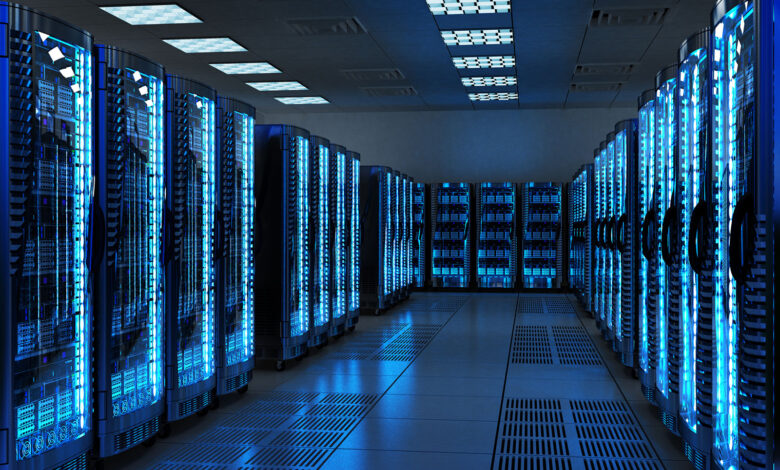Shielding Your Assets: Ensuring Safety in Data Centers and IT Facilities

In today’s digital age, data centers and IT facilities serve as the backbone of nearly every industry. These facilities house critical infrastructure and sensitive information, making their safety and security paramount. Ensuring the safety of data centers and IT facilities involves a multifaceted approach that addresses physical, operational, and cybersecurity risks. Let’s delve into some key strategies and best practices to shield your assets effectively.
Physical Security Measures
Physical security forms the first line of defense for data centers and IT facilities. It encompasses measures designed to protect the premises, equipment, and personnel from unauthorized access, theft, vandalism, and natural disasters.
Access Control:
Implementing robust access control mechanisms such as biometric scanners, access cards, and PIN codes ensures that only authorized personnel can enter sensitive areas. This helps prevent unauthorized physical access to servers and data.
Surveillance Systems:
Deploying CCTV cameras and monitoring systems throughout the facility enhances visibility and enables real-time monitoring of activities. This not only deters potential intruders but also provides crucial evidence in the event of security incidents.
Perimeter Security:
Securing the perimeter with fences, gates, and barriers restricts unauthorized entry into the premises. Additionally, incorporating sensors and alarms can alert security personnel to any breaches or suspicious activities.
Environmental Controls:
Maintaining optimal environmental conditions such as temperature, humidity, and airflow within data centers is essential to prevent equipment damage and ensure uninterrupted operation. Automated systems and sensors help monitor and regulate these conditions effectively.
Operational Safety Practices
Operational safety practices focus on procedures and protocols that mitigate risks associated with human error, equipment failure, and maintenance activities within data centers and IT facilities.
Regular Maintenance:
Establishing a regular maintenance schedule for equipment and infrastructure plays a crucial role in proactively identifying and mitigating potential issues before they become serious concerns.
This proactive approach involves thorough inspections of power distribution systems, cooling systems, and backup generators, and conducting Line Isolation Monitor (LIM) Testing. Regular maintenance not only ensures the smooth operation of data centers and IT facilities but also enhances their reliability and resilience against unforeseen disruptions.
Emergency Preparedness:
Developing and regularly updating emergency response plans ensures swift and effective responses to incidents such as fires, power outages, or security breaches. Conducting drills and training sessions with staff enhances preparedness and minimizes downtime during emergencies.
Change Management:
Implementing strict change management processes ensures that any modifications to hardware, software, or configurations are carefully planned, tested, and documented. This reduces the risk of disruptions and vulnerabilities arising from unintended changes.
Personnel Training:
Providing comprehensive training programs for staff members on security protocols, safety procedures, and best practices fosters a culture of awareness and responsibility. Educated employees are better equipped to identify potential threats and respond appropriately.
Cybersecurity Measures
In addition to physical and operational safety, cybersecurity measures are critical to safeguarding data centers and IT facilities against digital threats and malicious activities.
Network Security:
Implementing robust firewall systems, intrusion detection/prevention systems (IDS/IPS), and encryption protocols secure network traffic and protect against unauthorized access and cyberattacks.
Data Encryption:
Encrypting sensitive data both in transit and at rest adds a layer of protection against data breaches and unauthorized access. Strong encryption algorithms and key management practices are essential components of this strategy.
Regular Audits and Assessments:
Conducting regular security audits and vulnerability assessments helps identify and remediate potential weaknesses in systems and infrastructure. This proactive approach minimizes the risk of exploitation by cyber adversaries.
Backup and Recovery:
Implementing reliable backup procedures and disaster recovery plans ensures data resilience and continuity of operations in the event of a security incident or system failure. Regularly testing backups and recovery procedures is crucial to verify their effectiveness.
Conclusion
Ensuring the safety of data centers and IT facilities requires a comprehensive and integrated approach that addresses physical, operational, and cybersecurity aspects. By implementing robust physical security measures, adhering to operational safety practices, and enhancing cybersecurity defenses, organizations can effectively shield their assets from a wide range of threats.




